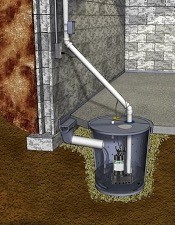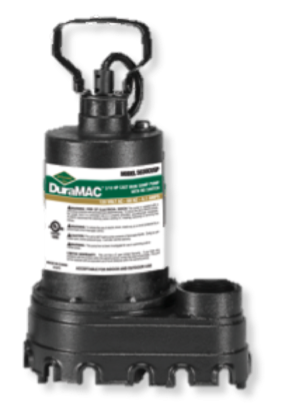The Starting Point to Properly Sizing a Sump Pump

The Starting Point to Properly Sizing a Sump Pump

- Prevents flooding from rainwater
- Keeps basement humidity levels low
- Reduces the risk of mold and mildew growth
- Keeps floodwater out of basement
- Improves indoor air quality by reducing humidity levels
- Removes groundwater from exterior walls of the building/home when tiled properly
How does a sump pump work? The pump sits in a sump pit, which is usually installed at the lowest point of the basement. The water that drains into the pit triggers the sump pump via a float switch, thus removing the water by pumping it into a storm drain, or retention pool. As a common fixture in most homes at this point, a sump pump is a simple and small solution to what could lead to a big long-term problem. However, the effectiveness of the pump may rely on how well its sized for the application.
An incorrectly sized sump pump, or a pump that is not installed properly, will most likely lead to inefficiencies. For example, when a sump pump is too big, the pump is forced to work harder, resulting in a shorter product lifespan. But if it’s too small, the pump may not be able to adequately pump out the water – resulting in a shorter lifespan or not meeting the demand. Continue reading to learn the information required to properly size a sump pump that can then be applied to find the manufacturer’s performance curve that matches best:
- Pump capacity needs
- Step 1: On a very wet, rainy day, the sump pump must be run until the water recedes to the shutoff level. Wait for one minute with the pump off and then measure how far the water rose during that time.
- Since typical sump pits measure around 18” in diameter, every inch of water inside the pit amounts to approximately one gallon. If you have a 24” sump pit, then 1” of water is equivalent to about two gallons.
- Step 2: Multiply the number calculated from step 1 by a ‘safety factor’ of 1.5 to figure out the pumping capacity needed.
- Step 1: On a very wet, rainy day, the sump pump must be run until the water recedes to the shutoff level. Wait for one minute with the pump off and then measure how far the water rose during that time.
- Elevation
- The elevation is the height that water has to travel as it moves through the discharge pipe. Measure the vertical distance from where water enters the sump pump to the highest point of the discharge pipe.
- Friction loss
- Water flowing through piping will lose head pressure depending on factors, such as size of pipe, length of pipe, type of pipe, number of fittings, and flow rate.
- Total Dynamic Head (TDH)
- Defined as the total pressure or head the pump must develop. The TDH of a sump pump is the sum of elevation and friction loss.
The installation of a sump pump to a home or building can lead to many benefits – but only if it’s properly sized for the application. If you’re looking for more information on sizing a sump pump or how to choose one based off a performance curve, take the AYU course on the topic, call our customer service department at 1-800-292-2737, or fill out a contact us form on aymcdonald.com.

